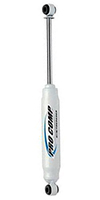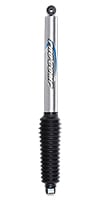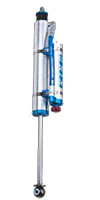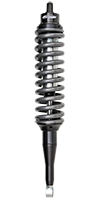Choosing the Right Shocks
Popular Suspension & Lift Kit Articles
- Choosing the Right Shocks
- Maximize Your Jeep's Suspension Travel
- Long vs. Short Arm Lift Kits
- A Look at Top Jeep Lift Kits
- Boost Your Off-Road Clearance
- Improve Handling and Performance
- Budget-Friendly Off-Road Upgrades
- Three Upgrades to Get Your Jeep Over the Hill
- Suspension Upgrades to Tackle Any Terrain
Comparing Common Performance Shock Absorbers
In this Article
There are a lot of types of shocks on the market, each applying a different method to smooth out your ride. Because there are so many kinds, it is important that you know which sort of shock to use for your style of driving. For instance, if you have a Jeep Wrangler Unlimited that lives to crawl rocky trails, you will want a different type of shocks than someone with a Jeep Grand Cherokee who loves the sand - and not just because of vehicle fitment.
The purpose of a shock absorber is to dampen the compression and rebound of your Jeep’s suspension system, so your driving experience isn’t so jarring. The shocks absorb the energy of each jostle and dissipate it in the form of heat, reducing the amount of bounce in your ride. There are two primary overarching categories of shocks: gas charged and hydraulic. Gas charged shocks are optimal for high speed driving, as there is no risk of aeration (air mixing with the fluid, causing foam and decreasing performance) like there is with hydraulic shocks. However, gas charged shocks also ride more stiffly than do hydraulic shock absorbers, which can make for a less comfortable ride for someone whose Jeep sees a lot of pavement or slower-paced off-roading.
While different types of shocks accomplish that task differently, they consist of the same basic components: piston(s), valve and fluid. Basically, the piston moves with spring travel and is forced through the fluid, displacing it through small holes and creating resistance. The resistance slows down the spring, absorbing the energy of the motion and decreasing bounce. Some common performance shock absorbers include:
Twin-Tube

| Pros | Cons |
|
|
Gas Charged, Twin-Tube

| Pros | Cons |
|
|
Monotube

| Pros | Cons |
|
|
Reservoir

| Pros | Cons |
|
|
Coilover

| Pros | Cons |
|
|



